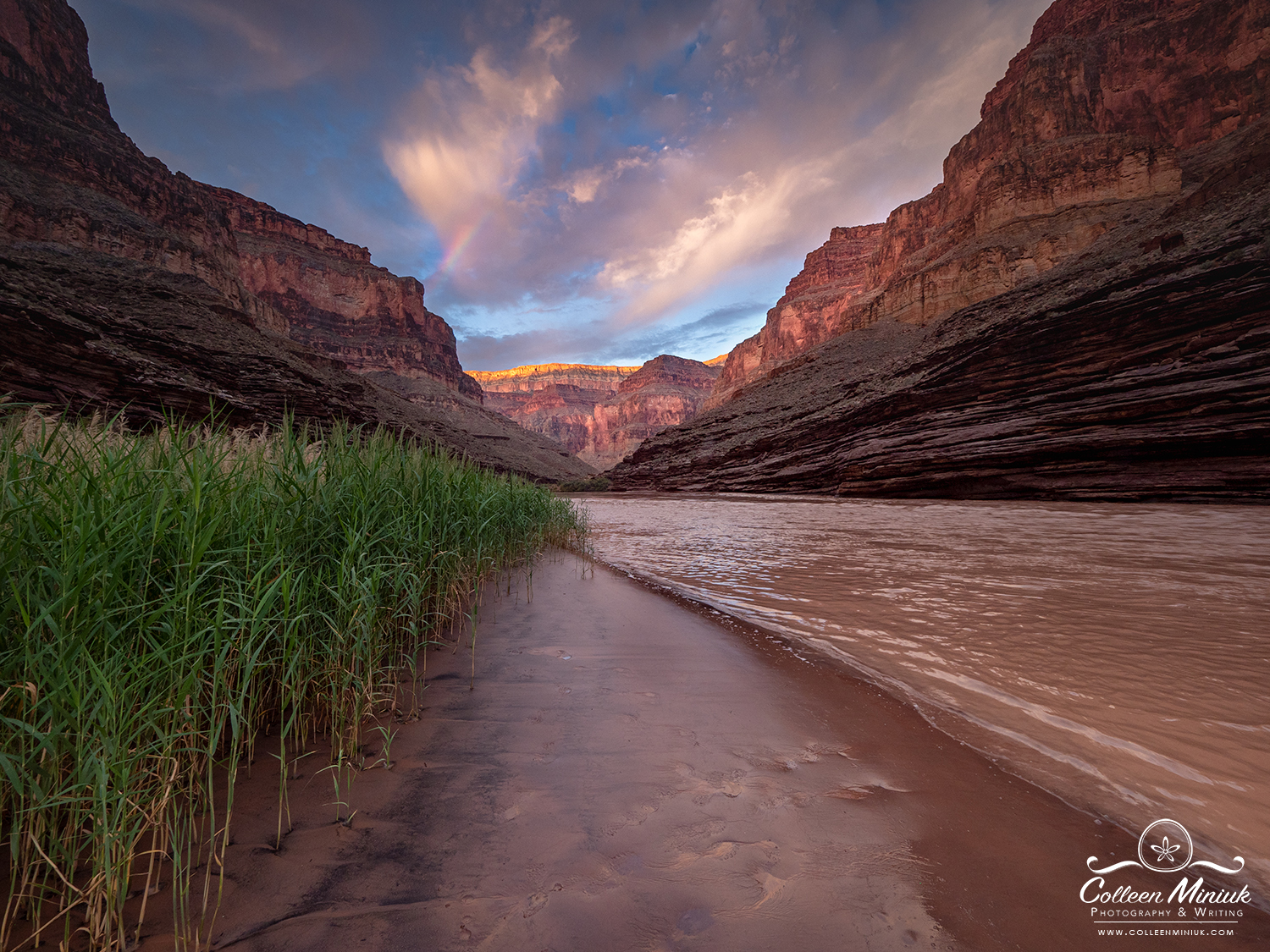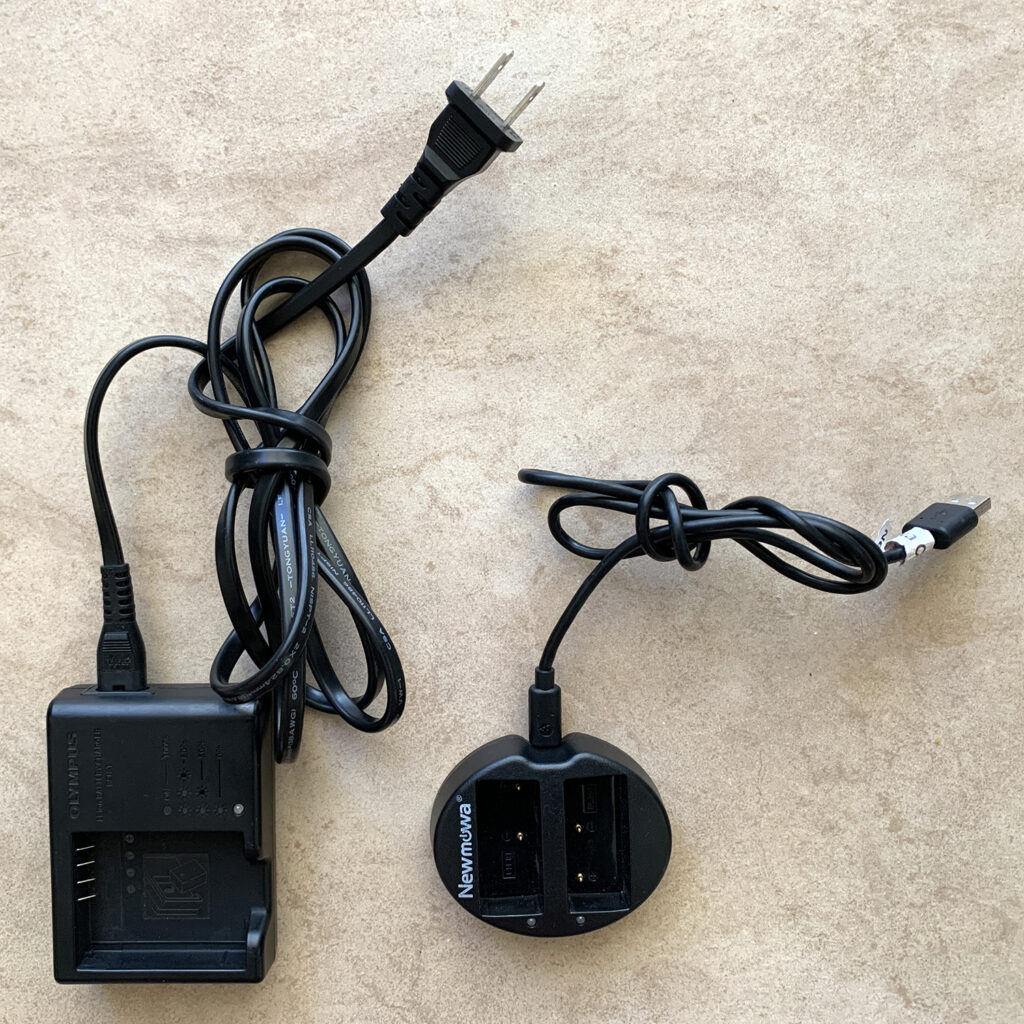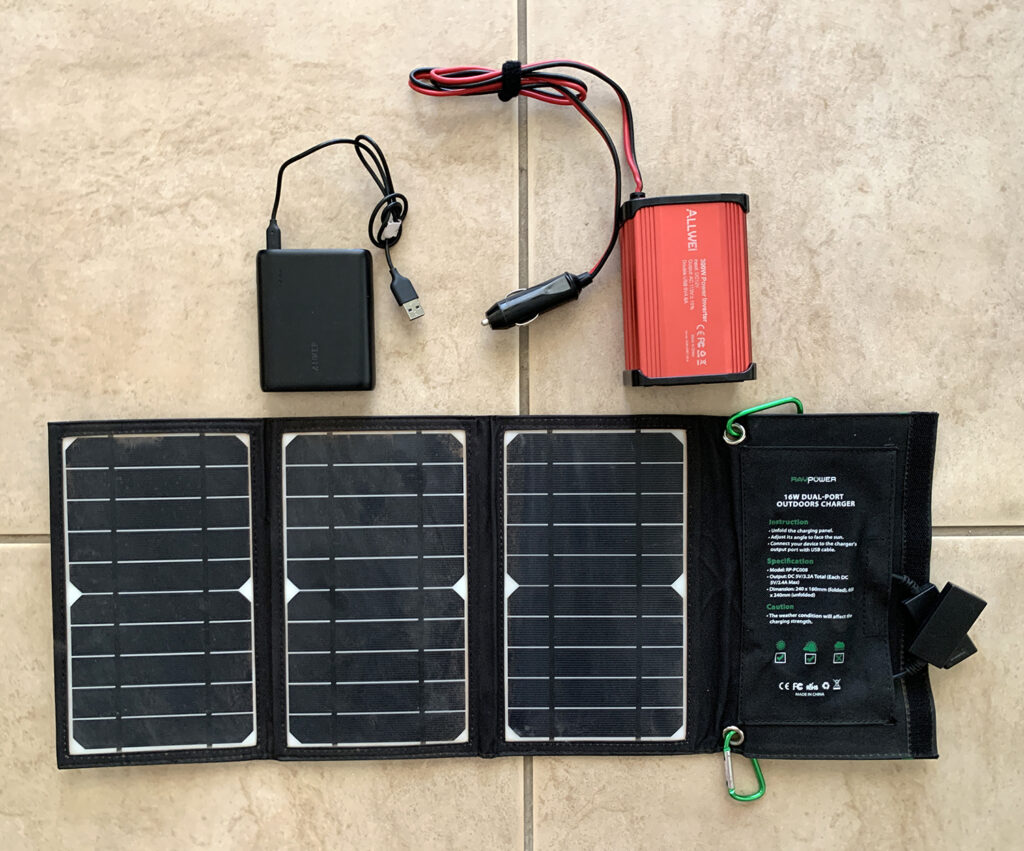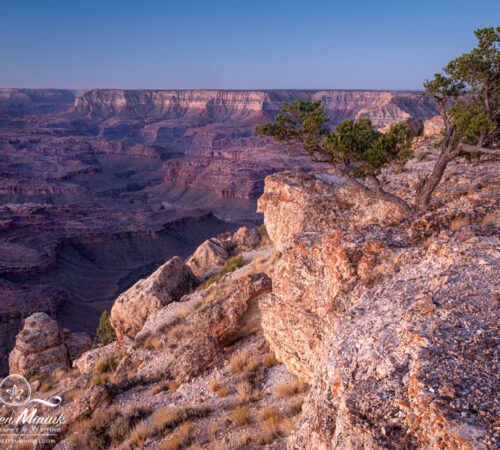All Charged Up

Dear Bubbles:
When you’re camping in the backcountry, or on an eight-day trip down the Grand Canyon, how do you charge your camera, laptop or phone batteries? Do you have some kind of solar charging system? Staying in motels when I travel, this is a non-issue, but I bought a fancy tent at Overland Expo with the intent of doing some camping (err, glamping?) next year.
~Deborah
Dear Deborah:
Congratulations on your new outdoor home! I bet you’re amped (pun intended)! Here’s hoping it provides you much comfort as explore more backcountry terrain and see more awe and wonder that takes your breath away. You’re smart to plan ahead not only to start building up new memories, but also ensuring you have enough power to create new photographs.
First off, I have six rechargeable batteries for my Olympus camera. I bought most of these in advanced of my first Grand Canyon rafting trip in June 2016 because I was worried I’d run out of power on the river. Since then, I’ve come to learn that I’m terribly forgetful and lazy about charging batteries so having additional batteries on hand has ensured my camera is always ready for action.
At home or in hotels or anywhere there’s electricity, I charge them up using the standard, single-slot battery charger that came with the camera. It simply plugs into the wall. Voila!
In the backcountry, though, it’s not so simple…
I—and my trip mates—get spoiled on my eight-day trips on the Colorado River through the Grand Canyon. Hatch River Expeditions, our commercial outfitters, pack not one, but two, 12 volt (12V) batteries. Most raft trips only get one. We get the second (i.e., special treatment) because the 16 of us typically have at least one camera and one mobile device (phone) plus possibly a smaller waterproof camera like an Olympus T6 and/or a video camera like a GoPro. In other words, a lotta gear.
And what’s a group of electronics brought by photographers called? A resistance. Bahahahaaaaa!
Jokes aside, the Hatch guides charge the two 12V batteries during the day while they run the motor to get us downstream. In the evenings at camp, we have a special table dedicated to charging our gear. From these 12V batteries, there is a 12V DC female plug (a cigarette-lighter-style plug) as well as a 150-watt inverter with a USB charging port and two AC standard outlet plugs. Because of the limited capacity and our power consumption on the trip, our groups are diligent about plugging in immediately once the charging station is set up and being mindful when their batteries are fully charged to allow others a chance to fill up. When everyone’s gear is laid out on the table, it’s hilarious. It looks like an electronics yard sale. (I don’t have a photo of this in my archives, but I have now added it to my shot list for my August 2023 run.)
Because most of our cameras do not come with an AC/DC or a USB connector, I’ve purchase third-party-branded USB-based chargers separately so that I have flexibility to plug in “around” my participants on the river. Besides, I’ve had, let’s just say, a troubled relationship with chargers on the river…

In the middle of my 2020 Grand Canyon rafting trip, the only charger I brought broke on the third day of our eight-day trip. No one else on the trip had the same camera or charger as I, so I had to ration my camera usage. It was like going back to the good ‘ole film days where you couldn’t mindlessly blast away. In the end, when it came time to sort through thousands of images, I wasn’t too sad about my mishap. There were worse things in the world…
Like on my 2022 trip, on day 5, I plugged my battery charger into a free space in Hatch’s table setup before going to bed. We had a torrential downpour overnight. I mean, the sky unleashed, lighting turned the dark into day, and the thunder echoed off the cliffs. It was unbelievably and utterly spectacular in every way (and it was the first night in seven trips I’d slept in a tent.) After the squall passed and morning came, I saw someone in camp covered the group of batteries with a metal salad bowl–bless their heart!–but the damage was done. The batteries worked fine. The charger was toast. It was a small sacrifice to pay to the almighty river gods. In return, they delivered a small rainbow over the canyon the next morning which resulted in the photograph at the top of this post.
I now religiously bring at least two chargers–plus my six batteries–for the Grand Canyon adventure. My camera consumes about a battery to a battery and a half a day on the river. On an eight day trip, that means I end up charging two or three times. I also bring a little extra whiskey to appease the almighty river gods (because I’ll be damned if they get my battery chargers again).
When I’m on a private river trip, I don’t have the space—or desire—to carry big, heavy 12V batteries on my stand-up paddleboard or raft. My need for power doesn’t go away, though, if I’m on a multi-day expedition on a lake or river. A small 16-watt, foldable, waterproof RAVPower solar charger panel comes with me instead. Mine’s old. It’s from 2018. They now come in fancier, more powerful 28-watt versions.
It’s not nearly as powerful as a 12V battery obviously, but it’s certainly lighter and more manageable. I can keep my phone charged with this (which really isn’t a majority priority for me on a river…). More importantly, it keeps my Anker PowerCore 13,000mAH power bank charged up—which is what I use to charge my camera batteries. Like my solar panel, it’s older. My power bank is from 2019. There are better, more powerful, and even bigger ones out there now. Technology develops so quickly these days…
(In case you’re wondering, a mAH stands for milliamp hour. It measures storage capacity and power over time. The bigger the number, the more energy charge a battery will hold which means a longer time before the battery needs to be recharged. A mAH differs from a watt. A watt tells us how much energy a battery consumes. A mAH and a watt differ from a volt. A volt quantifies the energy transfer. Is your head buzzing? Mine is. Let’s move on…)
Technically I don’t need the power bank so long as I remember to bring the right USB-to-battery charger connectors to plug directly into the solar panel. But remember my troubled history? Yup, in 2015, I accidentally dumped my solar panel battery bank in Lake Powell on the first day of what was to be a 14-day trip with my mom. I didn’t have a back-up bank. I also didn’t have the right connector for my camera charger to the solar panel directly (in my defense, this wasn’t feasible with this early set-up I had…). In the moment, I couldn’t have cared less about making photographs; I was worried about keeping my Garmin InReach powered up in case of an emergency for the entire trip. My dad ended up shipping us a back-up overnight to Halls Crossing, where we’d stop in the days ahead. As some of you know, in short, we got rescued out of a windstorm on the 4th day and cut our trip short so I didn’t ended up needing it after all. (The longer story to be told in my forthcoming memoir…).
As you can imagine, the heart of river country, especially at the bottom of the Grand Canyon, is absolutely no place for a laptop. In theory, you could plug a laptop into the inverter but you’re likely to get sand in the keyboard, it could get wet, or even smashed in the gear pile. Besides, when you can spend your time running your fingers across smooth two billion-year-old rock, under splashy waterfalls, and across the textures of ancient fossils, why would anyone want to sit at a computer and type out a status report instead?!? The demands of the manufactured world melt away the second you get on that boat at Lee’s Ferry, and the real world reveals what’s truly meaningful in this life. (Hint: it ain’t status reports…) My laptop has never been on a river trip–commercial or private.
Now, that said, I’ve written and edited at least two guidebooks and written countless Dear Bubbles column–among other work–on my laptop in my camper in faraway places. When I purchased the camper, which I affectionately refer to as Juno (after the Roman goddess), I outfitted it with Go Power! solar panels that feed two 12V AGM marine batteries. (AGM stands for Absorbed Glass Mat” and refers to its difference in construction from lead-acid batteries.) My truck battery also adds juice to these camper marine batteries while I’m driving. With this arrangement, I can keep my small refrigerator, water pump, fans, and heater running for weeks on end in the wilds—rain or shine.
Inside my camper, I have two 12V DC female plugs that tap into this system as well. To charge my iPhone, camera, laptop, heating pad, basically any small electronic from these two plugs, I purchased a 150-watt inverter with two USB ports and a single AC standard outlet. If I happened to be camping in a campground with hook-ups, I can plug my camper into the campground’s electrical system and use two standard electrical outlets inside as well.
Inside my truck, I have both a 12V AC plug into which I can either plug my inverter into or plug my connector with two fast-charging USB ports. I also have a separate USB plug. So long as I have a battery charger with a standard, USB or cigarette-lighter style receptor, I’m golden. It’s absolutely the definition of “glamping” even when I’m miles away in the backcountry.

When it comes to staying charged up while you’re roaming about, I think it comes down to giving yourself options. And there are many out there! To simply, here’s what I’d recommend for your new tent set-up:
- Figure out your average battery consumption per day. Multiple with the number of days you think you’ll spend at any one time off-grid. If you plan to invest in a reliable charging set-up, make sure you have at least half as many batteries on hand. If you aren’t sure about investing in charging power quite yet, have at least one battery per day per outing on hand.
- From your battery charger to an electrical source, purchase a battery charger with a USB plug or cigarette-lighter-style plug. Finding power to tap into with your standard AC plug that comes with your camera will be challenging in the wild.
- Then you can plug your charger into one of a variety of power sources, including:
- A power bank
- A separate 12V battery with inverter
- An external 12V or 18V solar panels–either small packable ones you could set out on a table or larger ones you could set out on the ground at camp.
- For smaller electronics like an iPhone, the MPOWERED Luci solar lanterns come with a USB charging port. (Some of you who have been on my workshops and have had the distinct pleasure of experiencing the “O’Dark Thirty Café” have seen my Luci lights. I love them because they are so lightweight and portable.)
- To keep the renewable sources of energy, like the power bank and 12V battery, all charged up, you can use the power originating from your vehicle and/or solar panels.
Hope that helps! Happy and safe travels to you and all. And enjoy your new tent, Deborah. As Marcia Griffiths sang, I hope “it’s electric, boogie woogie woogie!”
Be well, be wild,
Bubbles
Have a question about photography, art, and/or the creative life? Need some advice? Looking for inspiration? Send your question to Dear Bubbles at colleen@colleenminiuk.com to be possibly featured in a future column post. (If you’d prefer a different display name than your real first name, please include your preferred nickname in your note.
If you liked this post, please consider supporting Dear Bubbles either through a monthly contribution through Patreon or a one-time donation through Buy Me a Coffee. Learn more about both at https://dearbubbles.com/support.





3 Comments
Deborah Nielsen
Thanks so much, Colleen, for answering my question. I have a battery bank (that I’ve used to charge my cell phone and Lume Cubes) but have held off on getting anything else because I wasn’t sure what would work. You reminded me about the existence of inverters which I had forgotten about for some reason. And I do know the difference between an AGM battery and a regular lead acid battery thanks to my proclivity for collecting various brands and models of motorcycles and scooters. The AGM battery is necessary because my Yamaha Majesty scooter’s battery is placed on its side and slid into a small compartment in the rear. At least it’s not in the bowels of a front fairing as Yamaha is extraordinarily good at.
Jackson Frishman
Interesting to hear how things go on the river these days. I’ve got a long (19 days to Pierce) Canyon private on the schedule for 2024, so I need to think this stuff through. Last time in 2008 (has it really been that long?) I got by fine just launching with five charged batteries, but I may want a bit more power this time. We’ll see. I assume Ceiba etc rent charging setups these days.
Sometime if you feel inspired, I’d love to hear your musings about your approaches to shooting on a Canyon trip now that you’ve done it a lot. I’m totally over the need to bag any standards like the Nankoweap granaries, Deer Creek Falls, etc., and like like being more contemplative and spontaneous these days anyway. Not even sure quite what I’m asking, I probably just want an excuse to think about the Grand Canyon, but I’d love your random thoughts!
Deborah Nielsen
Thanks, Colleen, for taking my question. I appreciate all your info on the different types of battery chargers for electronics. I had forgotten about inverters for some reason although I have looked at them in the past. The plethora of solar chargers is confusing and I had no idea which ones would work best; now I know what to look for. I do have a battery bank that I’ve used to charge my cell phone and Lume Cubes. But beyond that I didn’t have much of a clue. I know the difference between an AGM battery and a lead acid battery thanks to my proclivity to collect various brands and models of motorcycles and scooters. My Yamaha Majesty scooter requires an AGM because the battery is installed on its side in a very small compartment in the rear just above the taillight assembly. I know a great deal about automotive and motorcycle batteries and battery chargers but that’s a whole other subject. Now you’ve got me thinking about putting a marine battery in the Ridgeline so I can power the electronics. Hmmm.